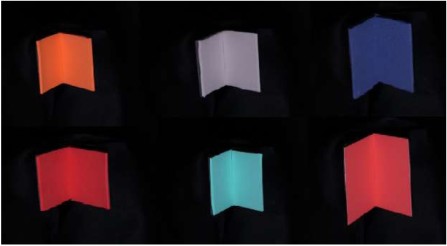Digital Management of mutual illumination
Surface appearance may be affected in terms of color and brightness by multiple bounces of light rays and shadows between subareas of the surface. These phenomena may be the cause of the more or less matte aspect, possibly of the color change of ridged planar metallic surfaces. Even more challenging is the appearance of translucid and rough color films after halftoning. Being able to predict the appearance of a surface before texturing it at a meso\mico-scale (MMIS project in partnership with LIRIS in the framework of FIL-Image \ PROTEVS 2) is crucial for digital prototyping, an efficient tool in design and manufacturing.
At a macroscale, interreflections between neighboring colored objects modify their respective colors as seen by a human observer of a digital camera. Exploiting the interreflection effects in the RGB image of a concave object allows estimating the spectral reflectance of the object or the spectral power distribution of the illuminant, or color correction by smart devices (a joint MMIS and IUA project).

RGB pictured of folded diffusing pannels where the interreflection effect produced brighter colors around the fold. Spectral information concerning the pannels or the lighting can be recovered from these RGB pictures.
Katemake, P., Deeb, R., Damien, M., Hébert, M., & Tremeau, A. (2017, October). Mutual Illumination and Color Constancy. In 13th congress of Internation Colour Association (AIC 2017).
